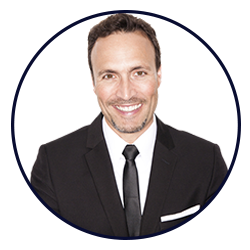When it comes to your brain, you actually can teach an old dog new tricks. Once thought to be hard-wired after early childhood, the brain actually has a remarkable ability to change and heal itself. Known as neuroplasticity, this remodeling due to our environment, behavior, and feelings happens throughout our whole lives.
For many years, scientists thought of the human brain as a kind of machine doomed to break down over time. But in the 1970s, studies began to show the brain rewiring itself according to experience. At the University of California-San Francisco, Dr. Michael Merzenich found that the area of the brain responsible for processing sensory input from a body part weakened or was assigned another function if an animal stopped using that body part. Dr. Mark Rosenzweig and his colleagues at the University of California-Berkeley discovered animals’ brains grew in key areas with environmental stimulation. The results of both of these studies have been replicated many times, and current research offers further evidence of the brain’s plasticity.
Physical Exercise Improves Brain Function: Plasticity at its finest
A 2013 review conducted by Kirk Erickson and his team at the University of Pittsburgh and published in the Proceedings of the National Academy of Sciences found significant growth of the hippocampus, the part of the brain linked to memory, in people who exercised aerobically for one year. Across many studies reviewed, people who exercise more had improved cognitive function.
What does all this science suggest? If the brain is malleable, can it be trained?
Many experts think so.
Meditators have larger pre-frontal cortex sizes, the part of the brain important in executive decision-making. And brain scans done on stroke patients treated by Edward Taub, a neuroscientist at the University of Alabama-Birmingham who helps people recover the use of their limbs by putting the “good” arm in a sling and methodically retraining the paralyzed arm, have shown healthy neurons taking over for adjacent damaged ones.
In The Woman Who Changed Her Brain: How I Left My Learning Disability Behind and Other Stories of Cognitive Transformation, Barbara Arrowsmith-Young details her own experience with neuroplasticity. Born with severe learning disabilities, Arrowsmith-Young made it all the way to graduate school through intense willpower. Her research there inspired her to develop a set of cognitive exercises for herself, and she’s spent the last 30 years sharing her work with kids and adults at her Arrowsmith Schools. (See Arrowsmith-Young’s TED Talk here.) Another believer, psychiatrist and researcher Norman Doidge, wrote a book, The Brain That Changes Itself, about neuroplasticity and the ways in which people can harness it to increase their mental and even physical strength.
According to the afore-mentioned plasticity research pioneer Dr. Merzenich, though, certain conditions are important to help maximize your brain’s flexibility. He lists several core principles necessary for training your brain in his book, Soft-Wired: How the New Science of Brain Plasticity Can Change Your Life. These necessities include engagement and motivation, a strong desire to master something, and dedicated practice. Merzenich also describes the brain as “use it or lose it” and warns it’s as easy to affect a negative brain change as it is a positive one.
The bottom line is, you’re not stuck with the brain you were born with. Through focused perseverance, you can harness the power of neuroplasticity.
Wondering what others areas of your health could use your attention? Consider taking my Optimal Men’s Health quiz. It’s designed to help you determine your next best step to getting healthier and closer to winning.
Myles Spar, MD, MPH is board-certified in Internal Medicine and in Integrative Medicine. As a clinician, teacher and researcher on faculty of two major medical centers, he has led the charge for a more proactive, holistic and personalized approach to care that focuses on cutting edge technology and preventative care. Dr. Spar has traveled with the NBA, presented a TEDx Talk, appeared on Dr. Oz, and been featured in publications such as the Men’s Journal and the Los Angeles Times.


